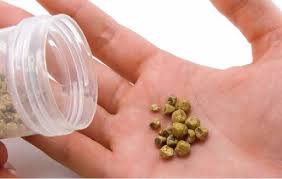In medical circles, gallstones are more commonly known as biliary stones. lithiasis . Statistics show that 15% of the population are carriers of such stones, and only 30% develop typical symptoms of the disease. The prevalence of biliary lithiasis increases with age and ranges from 5% around age 30 to more than 25% over age 60. Women suffer from gallstones 3 times more often than men.
Why do gallstones form and what are the risk factors? Bile is produced by the liver and contains a balanced amount of various components. However, it happens that this balance is disturbed in favor of the precipitation of cholesterol and/or the bile pigments it contains. Gallstones can form due to a birth defect in the liver, which produces bile that is too rich in cholesterol, or because the gallbladder tends to concentrate too much of it.
Along with genetic predispositions, there are also acquired lifestyle risk factors. It:
• rapid weight loss, obesity;
• pregnancy, use of contraceptives , substitution therapy;
• unbalanced diet.
Rapid weight loss: Excessive calorie restriction or prolonged fasting promotes stone formation by slowing gallbladder motility. Obesity: overweight people excrete more cholesterol and less fatty acid salts, emptying the gallbladder is worse. For this reason, the formation of gallstones in obese people occurs more often than in patients with normal weight.
Pregnancy (especially the third trimester), birth control pills, estrogen replacement therapy are associated with an increase in estrogen concentration, which leads to increased secretion of cholesterol and promotes the formation of stones.
Biliary lithiasis can be associated with a diet that is excessively rich in lipids (in the general sense, rich in fatty acids, cholesterol, etc.) or too poor (low in fat).
Additional Risk Factors gallstones include: certain inflammatory bowel diseases such as ulcerative colitis and Crohn's disease; diabetes; hypercholesterolemia and hyperlipidemia ; elevated levels of triglycerides in the blood; age over 40 years (associated with greater lithogenicity of bile); anemia.
What are the symptoms of gallstones?
Quite often, gallstones do not make themselves felt (asymptomatic stones). However, in other cases, they can cause serious disorders that require the intervention of a doctor.
Signs of the presence of stones in the gallbladder are mainly due to biliary colic. In some cases, patients may complain of digestive difficulties, nausea, vomiting, and visceral pain.
What to do?
There are various treatments that can destroy cholesterol stones with drugs, but they usually take a very long time and there is no guarantee that the stones will not reappear. The only way to permanently solve the problem is cholecystectomy . This intervention is successfully performed by the surgeons of the Bogolyuby Medical Center . Cholecystectomy is increasingly being preventive, especially given the risk of stone displacement.
Diet for gallstones
First, in order to prevent the formation of stones in the gallbladder, you should return to normal weight. When obese or overweight, correctly divide the caloric content of the diet: 30% of calories should be provided by lipids, 13% by proteins (or 0.75-1.2 g of protein per kg of body weight) and the rest by carbohydrates. Secondly, the patient's diet should not be accompanied by long periods of fasting. On the contrary, it is better if the diet is divided into at least 5 daily meals. Remember that the state of dehydration contributes to the precipitation of cholesterol, so it is recommended to choose dishes with a lot of water (soups, fruits, vegetables).
Some statistical studies have shown a correlation between a diet rich in refined sugar, low in fiber, and a high incidence of gallstones. Finally, regular physical activity is recommended to help mix the bile juices.
















